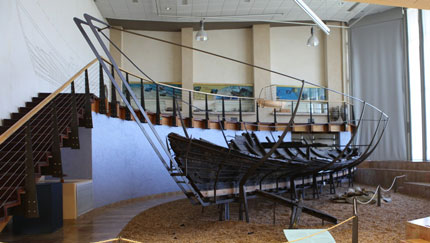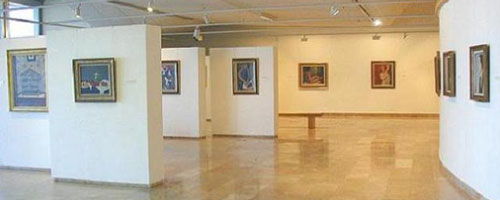The Hecht Museum at the University of Haifa was inaugurated in 1984. It was the initiative of the late Dr. Reuben Hecht, founder of the "Dagon Silos" in the port of Haifa and a founding member of the University of Haifa Board of Governors.
From his youth, Dr. Hecht was interested in the archaeology of the Land of Israel, and he assiduously collected archaeological artifacts representing the material culture of the Land of Israel in ancient times. Dr. Hecht, who was known for his Zionist activities, believed that archaeology was an important expression of Zionism and that the discovery of ancient artifacts was proof of the link between the Jewish people and the Land of Israel.
About two years before his Dr. Hecht's passing in April 1993, he began planning an expansion of the Museum. The management of the University of Haifa and the directors of the Hecht Foundation continued with this initiative, and the new wing of the Museum was inaugurated in October 1998.
The Archaeololical Wing

The permanent displays in the new wing are thematic and based both on archaeological artifacts from the Hecht Collection and those on loan from the Israel Antiquities Authority:
- Archaeology of Eretz-Israel in Chronological Sequence: Beginning with the Chalcolithic Period and ending in the Late Byzantine period.
- Thematic Display: Jewish coins, West Semitic seals, weights, jewelry, toys, oil lamps, and artifacts from the Temple Mount Excavations in Jerusalem.
- Phoenicians on the Northern Coast of Israel in the Biblical Period: The contribution of the Phoenicians, the sea-going traders, to the technology of harbor engineering, development and distribution of the alphabetic script, and more.
- Ancient Crafts and Industries: Metalworking, woodworking, stone vessels, glassmaking, mosaic art, the art of writing, and the physician's craft.
- Ma'agan Mikhael Ancient Ship: The hull of the 2400-year-old ship, its anchor and cargo.
- Findings from the University of Haifa Excavations
The Art Wing

The Art Wing of the Museum was inaugurated in early 1989. Displaying artwork from the Hecht Family Collection, this wing presents important trends in art, beginning in the 19th century. Its emphasis is on Impressionism and the work of Jewish artists in the School of Paris. Included in this collection are works by Van Gogh, Manet, Monet, Pissarro, Soutine and Modigliani.
Permanent Art exhibitions:
The Auditorium
The new wing contains a grand and acoustically superior auditorium that seats 380. A pipe organ, which was put together from parts of organs used in churches in Israel more than a century ago, was also installed. Its sonorous tones reflect the traditional quality, rich variety, and romantic style of 19th-century organs.